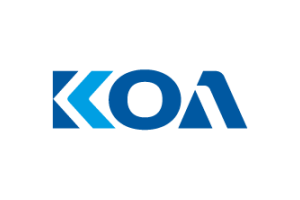Cables in robotics
Every tenth counts
AI and robotics play a growing role in everyday life and industry — and make their demands of cables: extreme reverse bending and rotating movements plus tight confines place challenges on the cables sector. A look at this.

Robotics and automation hit a record €14.5 billion turnover in Germany in 2017 — a plus of 13 percent over the year before. For 2018 the VDMA Robotics + Automation Association is forecasting 9 percent growth of the sector to €15.8 billion. Between 2010 and 2017, say the experts, the sector grew an average 10 percent annually, almost doubling its turnover in this period.
The cables sector must move on with the worldwide trend to automation and digitalization, facing the high demands in robotics. Because depending on where a robot is used and its functionality, the cabling must withstand heavy mechanical stress, by the same kind of motion, again and again for instance. “Operators of robots increasingly expect the reliability and availability of robots to rise, and today’s 2 to 3 million torsion and bending cycles, like for control and sensor leads, to easily hit 10 million and more”, states Marco Reichenbächer, manager international strategic marketing of Belden. “Then it will often be possible to have a robot work for maybe 7 years without changing cables.”
Driving the complexity of cables, he says, is the increase in robot classes, differing in weight, size, application, and having to act in the tightest spaces. That calls for very small bending radius, and in turn smaller cable diameter. This is where Belden implements a solution like an elastic filler element that has a damping effect on the forces produced by torsion, and will enable five times the bending radius of the outer diameter.
Further there is the growing demand for gigabit bandwidth, like by image processing systems that, with Gigabit Ethernet and up to two terminals per camera, will increasingly firm a role in robots. Reichenbächer sees a major challenge up front in satisfying the Cat 6A standard (500 MHz) after EIA/TIA 568B2 with up to 10 Gbit/s bandwidth combined with higher reverse bending and rotation. “Today you mainly see Profinet data leads with 1 million torsion cycles. To achieve at least 5 million cycles, it takes expertise for the right mixture of the jacket material, the stranded structure, the bundling of the cores, and additional screening.” The Belden portfolio shows torsion-capable Cat 5e leads with 2 million cycles for robot integration, and it is planning to expand the range.
Likewise influenced by robotics is Ernst & Engbring (E&E Kabeltechnik), a manufacturer of special-purpose cables. “What faces us is the increasingly tight space plus more availability and more precision of the systems”, comments Sven Ortmann, head of development & engineering at E&E. To satisfy this kind of demand, the company, founded in 1952, develops special-purpose cables cooperating close up with the end-user. “In that way we can accumulate a whole wealth of experience, expanding from one project to the next.”
Material — but which?
In automobile production, especially in the body shell and in the paint shop, welding bead resistance and heat strength in ovens is important. “Abrasion-proof and wear-resistant, special polyurethane PUR exhibits high temperature strength as a jacket material. But in and around welding processes you can have 400°C and more for short periods”, explains Reichenbächer. Special PUR mixtures enable more temperature strength, and little adhesion of welding sparks. “A PUR jacket also satisfies further demands in robotics, like freedom from halogen, good resistance to UV radiation, and to a whole number of mineral oils and chemicals.”
Special demands have to be considered when it comes to torsion in conjunction with the shielding. “Rearranging the turns has proven to be an effective shielding method, in other words spiral winding with copper wires or copper film in only one direction. That reduces wear because the copper layers don’t rub against one another.” Where you have reverse bending with a radius of ten times the outer diameter of a cable, the shielding does not wear even for more than 10 million cycles of movement. Plus, it sustains torsional movement from 180 to 360° per meter for the entire lifetime of a cable, and achieves markedly higher tensile strength. “Too little tensile strength straight after installation is the weakness in a cable, because it’s restricted in its movement by the connector.”
In the meantime PUR leads have become standard, driven by the automobile industry and its suppliers from mechanical engineering. “And at the moment no other materials are in sight that excel the properties of PUR. Or offer the kind of cost/value ratio that the customer calls for”, resumes Reichenbächer.
- Every tenth counts
- Standard or custom?







